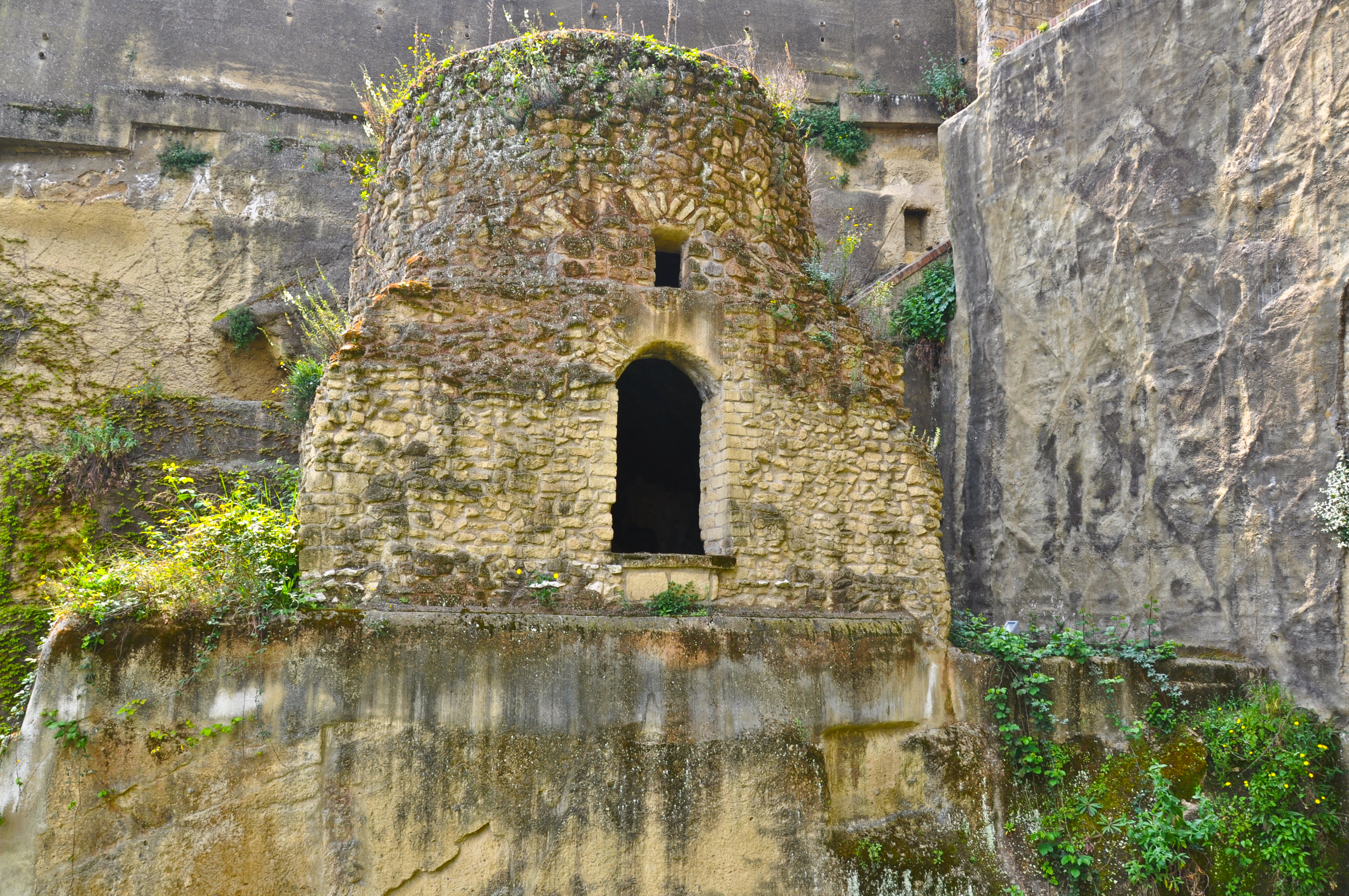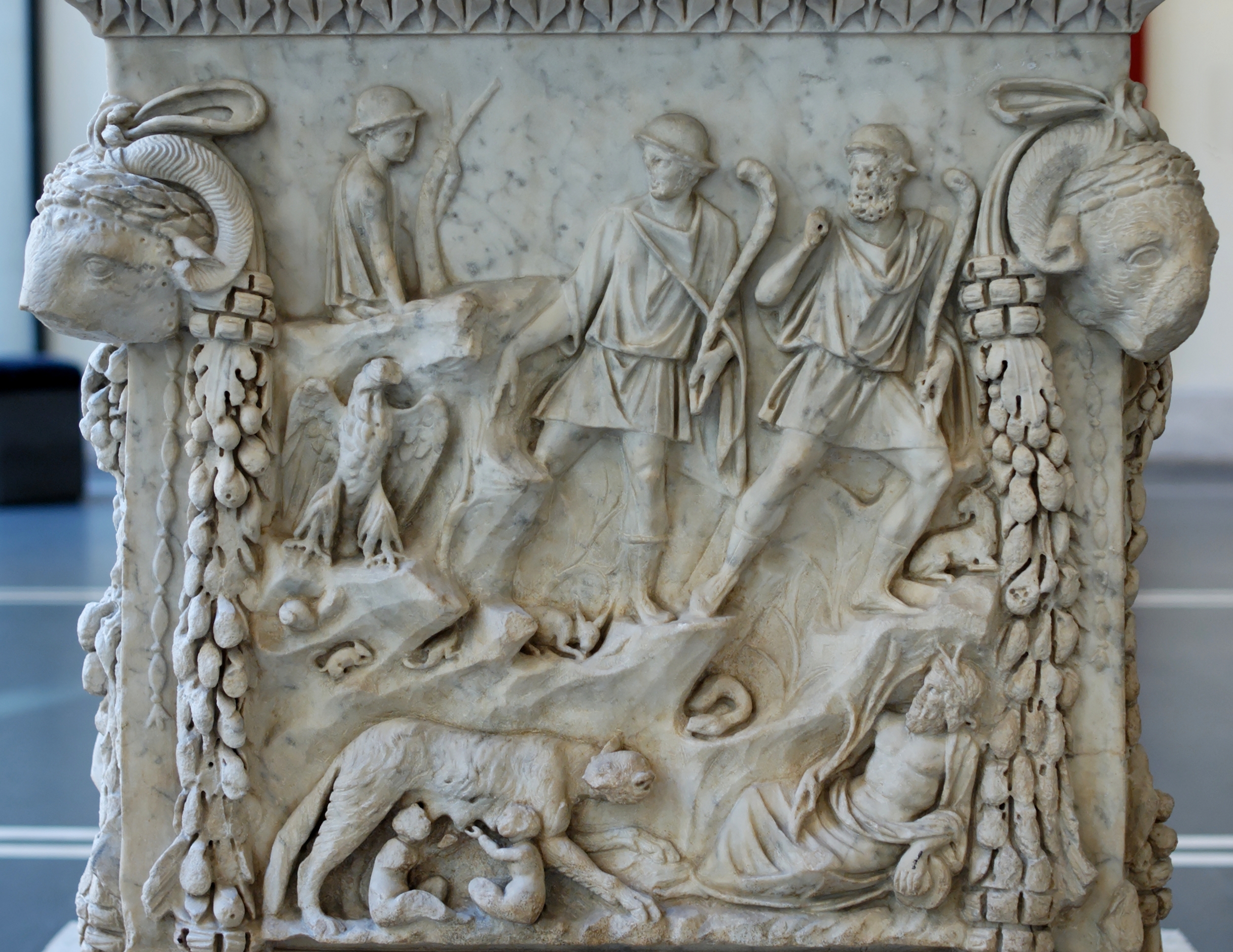|
Lupercalia
Lupercalia, also known as Lupercal, was a pastoral festival of Ancient Rome observed annually on February 15 to purify the city, promoting health and fertility. Lupercalia was also known as ''dies Februatus'', after the purification instruments called ''februa'', the basis for the month named ''Februarius''. Name The festival was originally known as Februa ("Purifications" or "Purgings") after the ' which was used on the day.. It was also known as ' and gave its name variously, as epithet to Juno Februalis, Februlis, or Februata in her role as patron deity of that month; to a supposed purification deity called Februus; and to February ('), the month during which the festival occurred. Ovid connects ' to an Etruscan word for "purging". The name ''Lupercalia'' was believed in antiquity to evince some connection with the Ancient Greek festival of the Arcadian Lykaia, a wolf festival (, ''lýkos''; ), and the worship of ''Lycaean Pan'', assumed to be a Greek equivalent to Faunus ... [...More Info...] [...Related Items...] OR: [Wikipedia] [Google] [Baidu] |
Lupercal
The Lupercal (from Latin ''wikt:lupa, lupa'' "female wolf") was a cave at the southwest foot of the Palatine Hill in Rome, located somewhere between the temple of Temple of Cybele (Palatine), Magna Mater and the Sant'Anastasia al Palatino. In the legend of the founding of Rome, Romulus and Remus were found there by the she-wolf (Roman mythology), she-wolf who suckled them until they were rescued by the shepherd Faustulus. Luperci, the priests of Faunus, celebrated certain ceremonies of the Lupercalia at the cave, from the earliest days of the City until at least 494 AD. Modern discovery In January 2007, Italian archaeologist Irene Iacopi announced that she had probably found the legendary cave beneath the remains of Emperor Augustus's house, the ''Domus Livia'', on the Palatine. Archaeologists came across the 15-meter-deep cavity while working to restore the decaying palace. On 20 November 2007, the first set of photos were released showing the vault of the grotto which is enc ... [...More Info...] [...Related Items...] OR: [Wikipedia] [Google] [Baidu] |
Lykaia
In Ancient Greece, the Lykaia () was an archaic festival with a secret ritual on the slopes of Mount Lykaion ("Wolf Mountain"), the tallest peak in Arcadia. The rituals and myths of this primitive rite of passage centered upon an ancient threat of cannibalism and the possibility of a werewolf transformation for the '' epheboi'' (adolescent males) who were the participants. The festival occurred yearly, probably at the beginning of May. The epithet ''Lykaios'' ("wolf-Zeus") is assumed by Zeus only in connection with the Lykaia, which was the main Arcadian festival. Zeus had only a formal connection as patron of the ritual. In the founding myth, of Lycaon's banquet for the gods that included the flesh of a human sacrifice, perhaps one of his sons, Nyctimus or his grandson, Arcas, Zeus overturned the table and struck the house of Lycaon with a thunderbolt; his patronage at the Lykaia can have been little more than a formula. Long afterward, in the late 3rd century CE, the philos ... [...More Info...] [...Related Items...] OR: [Wikipedia] [Google] [Baidu] |
Romulus And Remus
In Roman mythology, Romulus and (, ) are twins in mythology, twin brothers whose story tells of the events that led to the Founding of Rome, founding of the History of Rome, city of Rome and the Roman Kingdom by Romulus, following his fratricide of Remus. The image of a She-wolf (Roman mythology), she-wolf suckling the twins in their infancy has been a symbol of the city of Rome and the Ancient Rome, ancient Romans since at least the 3rd century BC. Although the tale takes place before the founding of Rome around 750 BC, the earliest known written account of the myth is from the late 3rd century BC. Possible historical bases for the story, and interpretations of its local variants, are subjects of ongoing debate. Overview Romulus and Remus were born in Alba Longa, one of the many ancient Latin cities near the seven hills of Rome. Their mother Rhea Silvia, also known as Ilia, was a Vestal Virgin and the daughter of former king Numitor, who had been displaced by his brother A ... [...More Info...] [...Related Items...] OR: [Wikipedia] [Google] [Baidu] |
Lubercus
Lupercus or Lubercus or Luberkus was a god in Roman mythology. Lupercus was a protector of the farmers, harvesting and packs of wild animals. Every year on 15 February in honor of him, the Romans held the Lupercalia. He was an ancient Italian god, worshipped by shepherds as the promoter of fertility in sheep and protector of flocks. His sanctuary was the Lupercal, where she-wolf took care of Romulus and Remus; this is why Lupercalia was a celebration that helped pregnant women. Lupercus is sometimes identified with the god Pan in Greek mythology. The Roman god Faunus In Religion in ancient Rome, ancient Roman religion and Roman mythology, myth, Faunus was the rustic god of the forest, plains and fields; when he made cattle fertile, he was called Inuus. He came to be equated in literature with the Greek god ... is a variation of Lupercus, also linked to the festival of Lupercalia. References Roman gods Lupercalia Agricultural gods Nature gods {{AncientRome- ... [...More Info...] [...Related Items...] OR: [Wikipedia] [Google] [Baidu] |
Cult Image
In the practice of religion, a cult image is a Cultural artifact, human-made object that is venerated or worshipped for the deity, Spirit (supernatural entity), spirit or Daimon, daemon that it embodies or represents. In several traditions, including the ancient religions of Ancient Egypt, Egypt, Ancient Greece, Greece and Rome, and Hinduism, cult images in a temple may undergo a daily routine of being washed, dressed, and having food left for them. Processions outside the temple on special feast days are often a feature. Religious images cover a wider range of all types of images made with a religious purpose, subject, or connection. In many contexts "cult image" specifically means the most important image in a temple, kept in an inner space, as opposed to what may be many other images decorating the temple. The term idol is an image or representation of a god used as an object of worship, while idolatry is the worship of an "idol" as though it were God. Ancient Near East and E ... [...More Info...] [...Related Items...] OR: [Wikipedia] [Google] [Baidu] |
Lydus
Lydus (Ancient Greek: Λυδός), a son of Atys and Callithea, grandson of Manes, and brother of Tyrrhenus or Torybus, is a legendary figure of the 2nd millennium BC who is attested by Herodotus to have been an early king of Lydia, then probably known as Maeonia. According to Herodotus, the country of Lydia and its people were afterwards named for Lydus, their mythical ancestor. Sources * Herodotus, I7 * , I. 27, &c. * , v. p. 219. Bibliography [...More Info...] [...Related Items...] OR: [Wikipedia] [Google] [Baidu] |
Virgil
Publius Vergilius Maro (; 15 October 70 BC21 September 19 BC), usually called Virgil or Vergil ( ) in English, was an ancient Rome, ancient Roman poet of the Augustan literature (ancient Rome), Augustan period. He composed three of the most famous poems in Latin literature: the ''Eclogues'' (or ''Bucolics''), the ''Georgics'', and the Epic poetry, epic ''Aeneid''. A number of minor poems, collected in the ''Appendix Vergiliana'', were attributed to him in ancient times, but modern scholars generally regard these works as spurious, with the possible exception of a few short pieces. Already acclaimed in his own lifetime as a classic author, Virgil rapidly replaced Ennius and other earlier authors as a standard school text, and stood as the most popular Latin poet through late antiquity, the Middle Ages, and early modernity, exerting inestimable influence on all subsequent Western literature. Geoffrey Chaucer assigned Virgil a uniquely prominent position among all the celebrities ... [...More Info...] [...Related Items...] OR: [Wikipedia] [Google] [Baidu] |
Plutarch
Plutarch (; , ''Ploútarchos'', ; – 120s) was a Greek Middle Platonist philosopher, historian, biographer, essayist, and priest at the Temple of Apollo (Delphi), Temple of Apollo in Delphi. He is known primarily for his ''Parallel Lives'', a series of biographies of illustrious Greeks and Romans, and ''Moralia'', a collection of essays and speeches. Upon becoming a Roman citizen, he was possibly named Lucius Mestrius Plutarchus (). Family Plutarch was born to a prominent family in the small town of Chaeronea, about east of Delphi, in the Greek region of Boeotia. His family was long established in the town; his father was named Autobulus and his grandfather was named Lamprias. His brothers, Timon and Lamprias, are frequently mentioned in his essays and dialogues, which speak of Timon in particular in the most affectionate terms. Studies and life Plutarch studied mathematics and philosophy in Athens under Ammonius of Athens, Ammonius from AD 66 to 67. He attended th ... [...More Info...] [...Related Items...] OR: [Wikipedia] [Google] [Baidu] |
Ab Urbe Condita Libri (Livy)
The ''History of Rome'', perhaps originally titled , and frequently referred to as (), is a monumental history of ancient Rome, written in Latin between 27 and 9 BC by the Roman historian Titus Livius, better known in English as "Livy". The work covers the period from the legends concerning the arrival of Aeneas and the refugees from the fall of Troy, to the city's founding in 753 BC, the expulsion of the Kings in 509 BC, and down to Livy's own time, during the reign of the emperor Augustus. The last event covered by Livy is the death of Drusus in 9 BC. 35 of 142 books, about a quarter of the work, are still extant. The surviving books deal with the events down to 293 BC (books 1–10), and from 219 to 166 BC (books 21–45). Contents Corpus The ''History of Rome'' originally comprised 142 "books", 35 of which—Books 1–10 with the Preface and Books 21–45—still exist in reasonably complete form. Damage to a manuscript of the 5th century resulted ... [...More Info...] [...Related Items...] OR: [Wikipedia] [Google] [Baidu] |
Livy
Titus Livius (; 59 BC – AD 17), known in English as Livy ( ), was a Roman historian. He wrote a monumental history of Rome and the Roman people, titled , covering the period from the earliest legends of Rome before the traditional founding in 753 BC through the reign of Augustus in Livy's own lifetime. He was on good terms with members of the Julio-Claudian dynasty and was a friend of Augustus. Livy encouraged Augustus’s young grandnephew, the future emperor Claudius, to take up the writing of history. Life Livy was born in Patavium in northern Italy, now modern Padua, probably in 59 BC. At the time of his birth, his home city of Patavium was the second wealthiest on the Italian peninsula, and the largest in the province of Cisalpine Gaul (northern Italy). Cisalpine Gaul was merged into Italy proper during his lifetime and its inhabitants were given Roman citizenship by Julius Caesar. In his works, Livy often expressed his deep affection and pride for Patavium, and the ... [...More Info...] [...Related Items...] OR: [Wikipedia] [Google] [Baidu] |
Justin (historian)
Justin (; fl. century AD) was a Latin writer and historian who lived under the Roman Empire. Life Almost nothing is known of Justin's personal history, his name appearing only in the title of his work. He must have lived after Gnaeus Pompeius Trogus, whose work he excerpted, and his references to the Roman Empire, Romans and Parthian Empire, Parthians having divided the world between themselves would have been anachronistic after the rise of the Sasanian Empire, Sassanians in the third century. His Latin appears to be consistent with the style of the second century. Ronald Syme, however, argues for a date around 390, immediately before the compilation of the Augustan History, and dismisses anachronisms and the archaic style as unimportant, as he asserts that readers would have understood Justin's phrasing to represent Trogus' time, and not his own. Works Justin was the author of an epitome of Trogus' expansive ''Liber Historiarum Philippicarum'', or ''Philippic Histories'', ... [...More Info...] [...Related Items...] OR: [Wikipedia] [Google] [Baidu] |
Dionysius Of Halicarnassus
Dionysius of Halicarnassus (, ; – after 7 BC) was a Greek historian and teacher of rhetoric, who flourished during the reign of Emperor Augustus. His literary style was ''atticistic'' – imitating Classical Attic Greek in its prime. He is known for his work ''Rhōmaikē Archaiologia'' (Roman Antiquities), which describes the history of Rome from its beginnings until the outbreak of the First Punic War in 264 BC. Out of twenty books, only the first nine have survived. Dionysius' opinion of the necessity of a promotion of paideia within education, from true knowledge of classical sources, endured for centuries in a form integral to the identity of the Greek elite. Life He was a Halicarnassian. At some time after the end of the civil wars he moved to Rome, and spent twenty-two years studying Latin and literature and preparing materials for his history. During this period, he gave lessons in rhetoric, and enjoyed the society of many distinguished men. The date of his d ... [...More Info...] [...Related Items...] OR: [Wikipedia] [Google] [Baidu] |







